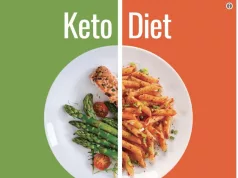Is running the best way to lose weight sets the stage for this enthralling narrative, offering readers a glimpse into a story that is rich in detail and brimming with originality from the outset. The answer, as with most things related to health and fitness, is not a simple yes or no. Running is undoubtedly a powerful tool for weight loss, but it’s not a magic bullet. To truly understand whether running is the best way to lose weight for you, we need to explore its benefits, drawbacks, and how it fits into a broader strategy for achieving your goals.
This article delves into the science behind running’s impact on weight loss, covering everything from its calorie-burning potential to its influence on metabolism and muscle building. We’ll also examine how running compares to other forms of exercise, discuss potential pitfalls like injuries and burnout, and provide practical tips for incorporating running into your routine safely and effectively.
Running for Weight Loss
Running is a highly effective form of exercise for weight loss, offering numerous benefits that can help you achieve your fitness goals.
Calorie Burning Potential and Weight Loss
Running is a vigorous activity that burns a significant amount of calories. The number of calories burned during a run depends on factors such as your weight, speed, and duration. For example, a 150-pound person running at a moderate pace for 30 minutes can burn around 300 calories. Consistent running can create a calorie deficit, which is essential for weight loss.
Muscle Building and Metabolism Boost
While running is primarily known for its cardiovascular benefits, it also plays a role in building muscle mass. Running strengthens your leg muscles, core, and glutes. Building muscle mass increases your metabolism, meaning you burn more calories even at rest.
Comparison with Other Exercise Forms
Running is considered one of the most effective forms of exercise for weight loss, compared to other activities like swimming, cycling, or weight training. Running burns more calories per hour than most other forms of exercise, making it a time-efficient option for weight loss.
Potential Drawbacks of Running
While running offers numerous benefits, it’s essential to be aware of potential drawbacks.
- Injuries: Running can put stress on your joints, especially your knees, ankles, and hips. If not done properly, it can lead to injuries like shin splints, runner’s knee, or plantar fasciitis.
- Burnout: Running can be demanding on your body and mind. Overtraining can lead to fatigue, exhaustion, and decreased motivation. It’s crucial to listen to your body and take rest days to prevent burnout.
Running Techniques for Weight Loss
Running is an excellent way to burn calories and lose weight. However, to maximize your results and minimize the risk of injury, it’s essential to focus on proper running form and incorporate effective training strategies. This section will delve into the key techniques that can help you achieve your weight loss goals while enjoying a safe and sustainable running routine.
Proper Running Form
Maintaining proper running form is crucial for efficient calorie burn and injury prevention. The following steps provide a comprehensive guide to optimize your running technique:
- Posture: Keep your head up and your eyes focused about 10-20 feet ahead. Relax your shoulders and maintain a straight back, avoiding hunching. Your core should be engaged to stabilize your body.
- Arm Swing: Swing your arms naturally at your sides, keeping your elbows bent at a 90-degree angle. Avoid swinging your arms across your body or crossing them in front of you.
- Foot Strike: Aim for a midfoot strike, landing on the middle of your foot rather than your heel or toes. This helps absorb impact and reduces stress on your joints.
- Cadence: Strive for a cadence of 180 steps per minute. This faster pace promotes a lighter foot strike and improves efficiency.
- Stride Length: Focus on taking shorter, quicker strides rather than long, exaggerated steps. This helps maintain a natural rhythm and reduces the risk of injury.
Warm-up and Cool-down Routines
Adequate warm-up and cool-down routines are essential for preparing your body for running and promoting recovery afterward.
- Warm-up: A proper warm-up should gradually increase your heart rate and body temperature, preparing your muscles for activity. It can include light cardio exercises like walking or jogging, dynamic stretches such as arm circles and leg swings, and light drills like high knees and butt kicks.
- Cool-down: A cool-down helps your body gradually transition back to a resting state. It involves light cardio like walking, followed by static stretches, holding each stretch for 30 seconds.
Interval Training
Interval training involves alternating between periods of high-intensity exercise and rest or low-intensity exercise. This method can significantly boost calorie burn and improve your overall fitness.
- Benefits of Interval Training: Interval training can enhance cardiovascular fitness, improve running speed and endurance, and increase calorie expenditure even after your workout.
- Sample Interval Workout:
- Warm-up: 5 minutes of light jogging.
- Interval 1: 1 minute of sprinting followed by 1 minute of jogging.
- Repeat Interval 1 for 4-6 times.
- Interval 2: 2 minutes of sprinting followed by 2 minutes of jogging.
- Repeat Interval 2 for 2-3 times.
- Cool-down: 5 minutes of walking.
Sample Running Schedules
Here are sample running schedules tailored for beginners and intermediate runners, aiming to promote gradual progression and prevent injury:
Beginner Running Schedule (3 days per week)
| Day | Workout |
|---|---|
| Monday | 30 minutes of walking |
| Wednesday | 20 minutes of jogging, 10 minutes of walking |
| Friday | 30 minutes of walking |
Intermediate Running Schedule (4 days per week)
| Day | Workout |
|---|---|
| Monday | 40 minutes of jogging |
| Tuesday | 30 minutes of walking |
| Thursday | 30 minutes of jogging, 10 minutes of interval training |
| Saturday | 40 minutes of jogging |
Running and Diet for Optimal Weight Loss: Is Running The Best Way To Lose Weight
Running is an excellent exercise for weight loss, but it’s only one piece of the puzzle. A healthy diet plays a crucial role in achieving your weight loss goals. By combining a balanced diet with your running routine, you can maximize your results and create a sustainable lifestyle change.
The Importance of Diet for Weight Loss
Diet is essential for weight loss because it directly impacts your calorie intake. When you consume fewer calories than you burn, your body starts using stored fat for energy, leading to weight loss. Running helps you burn calories, but your diet determines how many calories you consume.
Choosing Healthy Foods for Runners
Selecting the right foods can fuel your runs and support your weight loss journey. Here are some tips:
- Prioritize complex carbohydrates: These provide sustained energy during your runs. Examples include whole grains, fruits, and vegetables.
- Include lean protein: Protein helps repair and rebuild muscle tissue, essential for running performance and overall health. Choose lean sources like chicken, fish, beans, and tofu.
- Hydrate effectively: Water is crucial for performance and overall health. Aim for at least 8 glasses of water daily, especially on running days.
- Limit processed foods and sugary drinks: These foods provide empty calories and can hinder weight loss efforts.
- Focus on nutrient-dense foods: Choose foods rich in vitamins, minerals, and antioxidants to support your overall well-being.
Sample Meal Plans for Runners
Here are examples of meal plans that complement a running routine:
Pre-Run Meal (1-2 hours before running):
- Oatmeal with berries and nuts
- Whole-wheat toast with peanut butter and banana
- Greek yogurt with fruit and granola
Post-Run Meal (within 30 minutes of running):
- Grilled chicken breast with brown rice and steamed vegetables
- Salmon with quinoa and salad
- Tofu scramble with whole-wheat tortillas and avocado
Hydration for Weight Loss
Staying hydrated is vital for weight loss, as it helps regulate your metabolism, reduces hunger pangs, and supports your running performance. Here’s why hydration is crucial:
- Boosts Metabolism: Water helps your body burn calories more efficiently.
- Reduces Hunger: Drinking water can help you feel full, reducing your overall calorie intake.
- Improves Performance: Dehydration can lead to fatigue and decreased performance, impacting your runs and weight loss progress.
“Drink water throughout the day, especially before, during, and after your runs. Aim for 8 glasses of water daily, adjusting based on your activity level and climate.”
Running and Mental Health
Running is not just about physical fitness; it’s a powerful tool for enhancing mental well-being. The rhythmic movement and fresh air can work wonders for your mind, reducing stress, boosting mood, and improving overall mental health.
Stress Reduction and Mood Enhancement
Running releases endorphins, natural mood elevators that have pain-relieving and mood-boosting effects. Regular running can help reduce anxiety and depression symptoms by promoting relaxation and a sense of calm. The repetitive motion of running can also be meditative, allowing your mind to clear and focus on the present moment.
Improved Self-Esteem and Body Image
Achieving running goals, no matter how small, can boost your confidence and self-esteem. As you see progress in your running ability, you may start to feel more capable and empowered in other areas of your life. Running can also improve body image by helping you appreciate your body’s strength and endurance.
Overcoming Mental Barriers to Running
Many people struggle with mental barriers that prevent them from running. These barriers can include fear of failure, lack of motivation, or negative self-talk.
Tips for Overcoming Mental Barriers to Running and Staying Motivated
- Start small and set realistic goals. Don’t try to run a marathon on your first day. Begin with short walks or jogs and gradually increase your distance and intensity.
- Find a running buddy or join a running group. Having someone to run with can provide motivation, support, and accountability.
- Listen to music or podcasts while you run. This can help you stay entertained and focused.
- Reward yourself for reaching your goals. This can help you stay motivated and on track.
- Focus on the positive aspects of running. Think about how it makes you feel and the benefits it brings to your life.
- Don’t give up if you have a bad day. Everyone has setbacks. Just pick yourself up and try again the next day.
Running Safety and Injury Prevention
Running is a fantastic form of exercise, but it’s crucial to prioritize safety and injury prevention to avoid setbacks and maximize your enjoyment. Understanding common running injuries and implementing preventative measures can help you stay healthy and injury-free.
Common Running Injuries and Their Causes
Running injuries are prevalent, affecting a significant portion of runners. Knowing the common causes can help you make informed decisions to mitigate risks.
- Runner’s Knee (Patellofemoral Pain Syndrome): This condition often results from overuse, improper biomechanics, weak quadriceps, and tight hamstrings, leading to pain around the kneecap.
- Shin Splints (Medial Tibial Stress Syndrome): This common injury involves pain along the inner edge of the shinbone, often caused by overuse, inadequate footwear, and weak calf muscles.
- Achilles Tendinitis: Inflammation of the Achilles tendon, the thick tendon at the back of the ankle, can be caused by overuse, improper footwear, tight calf muscles, and sudden increases in training intensity.
- Plantar Fasciitis: Pain in the heel and arch of the foot, often worse in the morning, can be caused by overuse, flat feet, tight calf muscles, and improper footwear.
- Stress Fractures: These small cracks in bones, often in the foot or lower leg, are caused by repetitive stress and overuse, especially when training intensity is increased too quickly.
Preventing Running Injuries, Is running the best way to lose weight
Preventing running injuries is crucial for consistent training and long-term running success.
- Proper Training: Gradual increases in mileage and intensity are essential to allow your body to adapt and avoid overuse injuries. Follow a structured training plan that incorporates rest days and cross-training to prevent burnout.
- Proper Footwear: Choosing the right running shoes is critical. Seek advice from a running specialist or a professional who can assess your gait and foot type to find the best shoe for your needs. Replace worn-out shoes regularly to ensure proper cushioning and support.
- Strength Training: Strengthening key muscle groups, such as the quadriceps, hamstrings, glutes, and calves, can improve running efficiency and reduce the risk of injury. Incorporate exercises that target these areas into your training routine.
- Flexibility and Stretching: Maintaining flexibility and mobility is crucial for preventing injuries. Regularly stretch your hamstrings, calves, and hip flexors to improve range of motion and reduce muscle tightness.
- Listen to Your Body: Pay attention to your body’s signals and don’t ignore pain. If you experience discomfort or pain, rest and allow your body to recover. Pushing through pain can lead to more serious injuries.
Seeking Professional Help
If you experience persistent pain or discomfort despite implementing preventative measures, seeking professional help is crucial.
- Physical Therapist: A physical therapist can assess your injury, develop a personalized rehabilitation plan, and provide exercises and treatments to promote healing and recovery.
- Sports Medicine Doctor: A sports medicine doctor specializes in treating athletes and can provide expert diagnosis and treatment for running-related injuries. They may recommend imaging tests, such as X-rays or MRIs, to further evaluate the injury.
End of Discussion

Ultimately, the best way to lose weight is a personalized approach that considers your individual needs, preferences, and goals. While running can be a highly effective component of a weight loss strategy, it’s important to remember that it’s just one piece of the puzzle. By combining running with a balanced diet, proper rest, and a positive mindset, you can unlock your full potential for achieving sustainable weight loss and a healthier lifestyle.
FAQ Guide
Is running better than walking for weight loss?
Running burns more calories per hour than walking, but both activities are effective for weight loss. The key is to choose an activity you enjoy and can sustain over time.
How many calories does running burn?
The number of calories burned during running varies depending on factors such as your weight, speed, and duration. A general estimate is that a 150-pound person burns about 300 calories per 30 minutes of running.
Is it okay to run every day?
Running every day can be beneficial for weight loss, but it’s important to listen to your body and allow for rest days. Overtraining can lead to injuries and burnout.
While running is a fantastic way to burn calories and boost your metabolism, it’s only one piece of the weight loss puzzle. To truly succeed, you’ll also need to consider the types of diets that best suit your lifestyle and goals.
There are many different approaches to weight loss, and exploring the types of diets to lose weight can help you find the right path for you. Remember, combining a healthy diet with regular exercise, like running, is the key to achieving sustainable weight loss.
While running is a great way to burn calories and improve fitness, it’s only one piece of the weight loss puzzle. A balanced diet is crucial, and vegetarians may find it helpful to consult Recommended Dietary Allowance for Vegetarians: A Guide to ensure they’re getting all the nutrients they need.
Ultimately, a combination of exercise and a healthy diet tailored to your individual needs is the best approach to sustainable weight loss.
While running is a fantastic way to burn calories and boost your metabolism, it’s important to remember that weight loss is a multifaceted journey. A crucial element is ensuring your brain gets the right nutrients to function optimally, which is where the Recommended Dietary Allowance for Brain Health: Fueling Your Mind guide comes in handy.
By fueling your brain with the right foods, you’ll be better equipped to make healthy choices, stay motivated, and reach your weight loss goals.
























